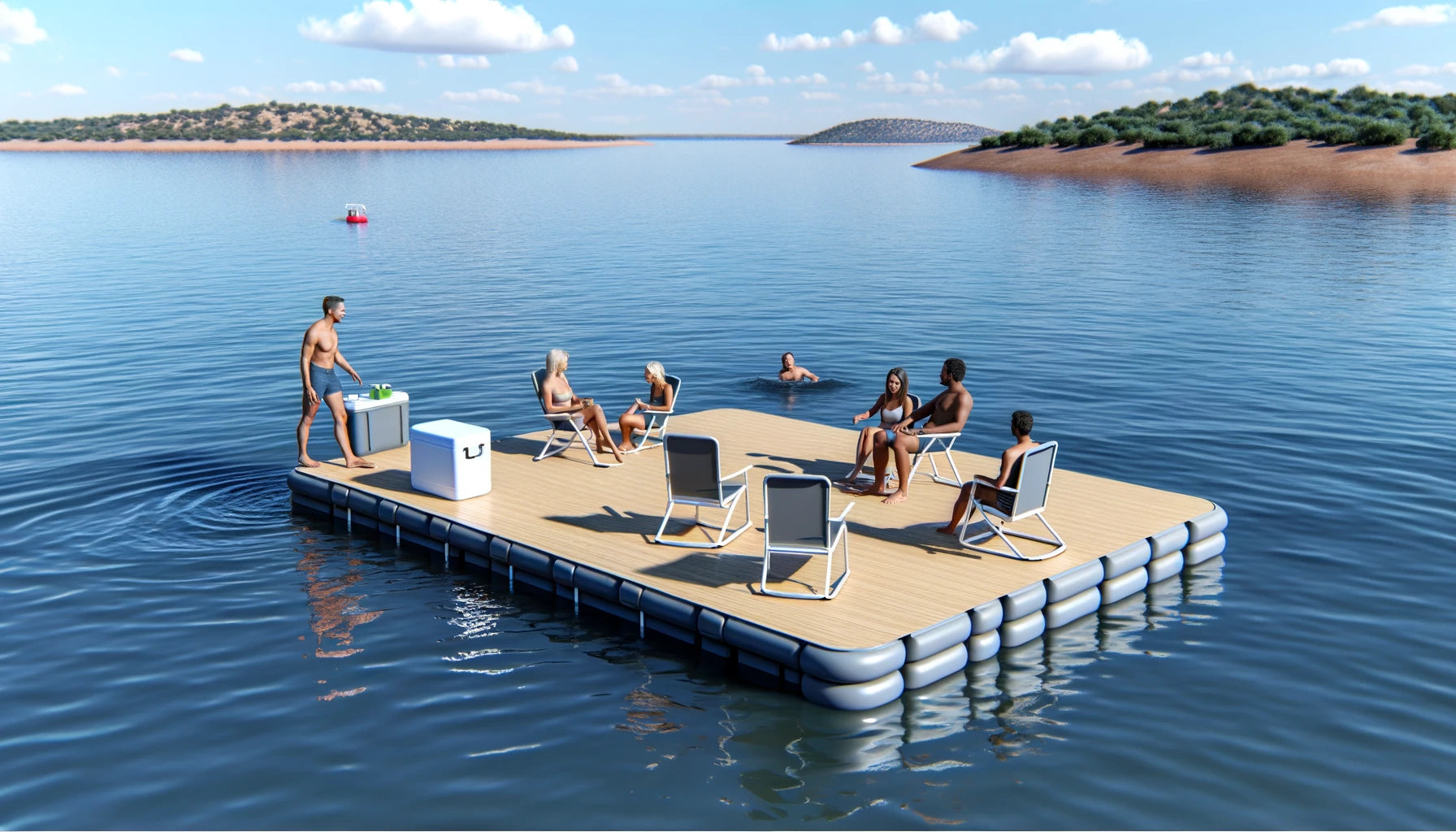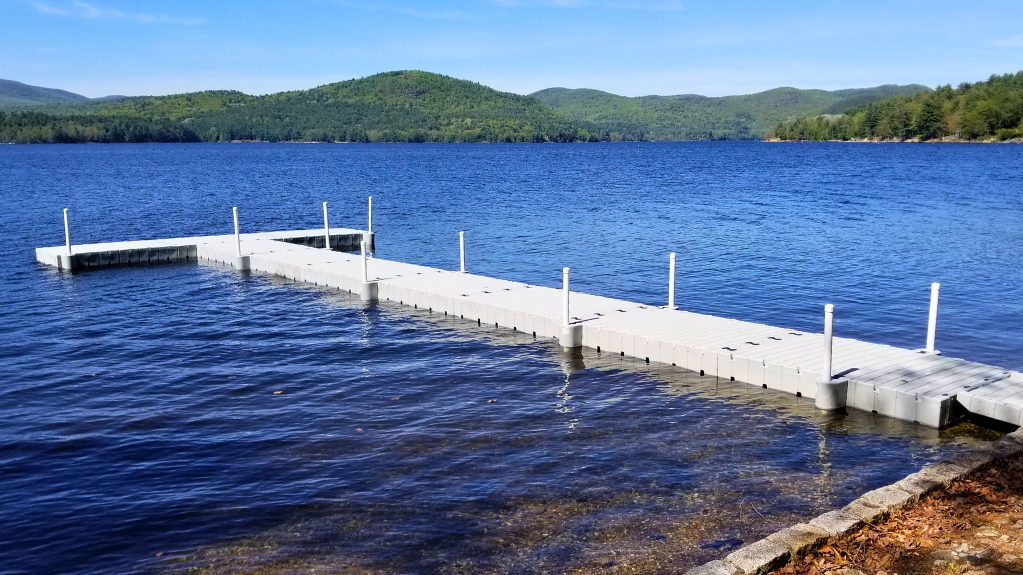Navigating the Options: Picking the Right Dock Company for Your Floating Dock Job
Navigating the Options: Picking the Right Dock Company for Your Floating Dock Job
Blog Article
Develop the Perfect Docking Remedy With Floating Docks
Floating docks existing a functional solution for a range of maritime demands, adapting seamlessly to rising and fall water degrees and varied vessel types. Their modular nature enables rapid setup and moving, yet the option of proper materials and layout functions is critical for making sure both performance and visual appeal. As we explore the essential elements that add to the efficiency of floating docks, several vital variables concerning security and upkeep will emerge, questioning concerning exactly how to maximize your docking experience. The succeeding conversation will certainly brighten these crucial considerations.

Benefits of Floating Docks
Floating docks deal many benefits that make them a suitable selection for various maritime applications. Unlike dealt with docks, floating docks surge and loss with the tide, ensuring consistent accessibility for vessels.
In addition, floating docks are normally much easier and quicker to mount contrasted to traditional set frameworks. Their modular style permits simple setting up and disassembly, helping with maintenance and relocation when necessary. This flexibility is specifically beneficial for short-term applications or in environments where conditions might transform.
Floating docks likewise have a tendency to be a lot more eco friendly, as they minimize disturbance to the seabed and surrounding water ecological communities. Their resilient nature decreases the risk of damage to aquatic life, promoting a healthier setting. These docks can be personalized to accommodate numerous vessel dimensions, making certain that they fulfill certain functional requirements.
Eventually, the mix of versatility, simplicity of installation, and ecological considerations makes floating docks a very effective option for a variety of maritime requirements.
Picking the Right Products
Selecting the ideal products for floating docks is essential to make sure stability, longevity, and longevity. The selection of products straight impacts the dock's efficiency in different ecological conditions, including direct exposure to water, sunlight, and prospective wear from marine website traffic.
Common materials utilized for floating docks include light weight aluminum, timber, and high-density polyethylene (HDPE) Light weight aluminum is light-weight, corrosion-resistant, and requires very little maintenance, making it an exceptional selection for durability. Nevertheless, its first price can be higher compared to various other materials.
Timber, while aesthetically appealing and giving a traditional look, can be prone to rot and insect damage if not properly treated. Consequently, using pressure-treated timber or naturally durable types like cedar or redwood can minimize these problems.
HDPE is a prominent choice due to its resistance to UV rays and chemicals, along with being eco-friendly. dock company. It is light-weight and readily available in different colors, permitting modification
Eventually, the ideal product option will certainly rely on specific needs, consisting of budget, preferred aesthetics, and ecological considerations. Cautious assessment of these variables will cause a successful and resistant floating dock service.
Design Considerations for Security
When developing floating docks, guaranteeing stability is an essential element that can dramatically influence their functionality and security. Security in floating dock layout is influenced by numerous variables, including buoyancy, weight distribution, and the plan of parts.
Weight distribution is important; equally distributing lots across the dock avoids turning and improves security. This can be attained via calculated positioning of docking devices, such as fenders and cleats, along with appropriate spacing of drifts. Furthermore, the measurements of the dock must be thoughtfully prepared. Wider designs can provide increased stability, particularly in rough water problems, while longer docks might call for extra supports to avoid sagging.
Another crucial factor to consider is the ecological impact, including wave action and wind. Incorporating attributes such as sidewalls or skirting can help minimize the impacts of environmental pressures, preserving stability in damaging conditions. Eventually, a combination of thoughtful style, material option, and understanding of ecological variables will yield a drifting dock that fulfills both security and safety requirements.
Installation Tips and Techniques

Following, safeguard the needed licenses and stick to regional guidelines, which may determine setup methods and ecological considerations. Involve a qualified professional experienced in floating dock setups if called read the article for. Usage premium materials made for marine atmospheres to boost toughness and longevity.
When placing the dock, align it parallel to the shoreline to help with simple accessibility. Make certain that the anchoring system is robust, utilizing concrete blocks or helical anchors to support the dock against wind and wave activity. It's crucial to make up seasonal water degree fluctuations, including possible ice motion in colder environments.
Throughout the installation, double-check the dock's floatation and security prior to settling the anchoring. Consistently examine the setup for any kind of indicators of wear or damages. By adhering to these methods and tips, you can achieve a protected, functional, and cosmetically pleasing floating dock setup that satisfies your needs.
Maintenance and Care Guidelines
Caring and preserving for floating docks is critical to prolonging their life expectancy and ensuring secure use. Regular inspections should be carried out to determine any signs of wear, damage, or marine development. Try to find fractures, loose fittings, or discolored areas on the dock's surface, as these issues can jeopardize architectural honesty.
Cleaning up is important. Utilize a stress washer to eliminate algae, barnacles, and debris, which can gather in time. For stubborn development, take into consideration eco-friendly cleaner that won't damage marine life.
Additionally, check the mooring lines and anchors regularly to ensure they are complimentary and safe from corrosion. Replace any kind of torn or harmed lines promptly to preserve security.
During severe weather condition, such as storms or freezing problems, take precautionary procedures. Protect the dock with added mooring lines and, if practical, eliminate any kind of removable parts to stop damages.
Verdict
In verdict, the application of floating docks provides a efficient and functional docking service suitable for various maritime applications. With proper installation and normal maintenance, floating docks can provide trustworthy and efficient docking experiences for a wide variety of vessels.
As we discover the crucial components that add to the efficiency of floating docks, a number of vital aspects relating to security and maintenance will emerge, elevating questions about exactly how to optimize your docking experience. Unlike fixed docks, floating docks surge and loss with click the tide, guaranteeing go to my site constant access for vessels.When developing floating docks, guaranteeing security is a fundamental aspect that can dramatically affect their functionality and safety. Stability in floating dock design is influenced by various elements, including buoyancy, weight distribution, and the plan of elements. Eventually, a combination of thoughtful style, material choice, and understanding of environmental elements will produce a floating dock that satisfies both stability and security demands.
Report this page